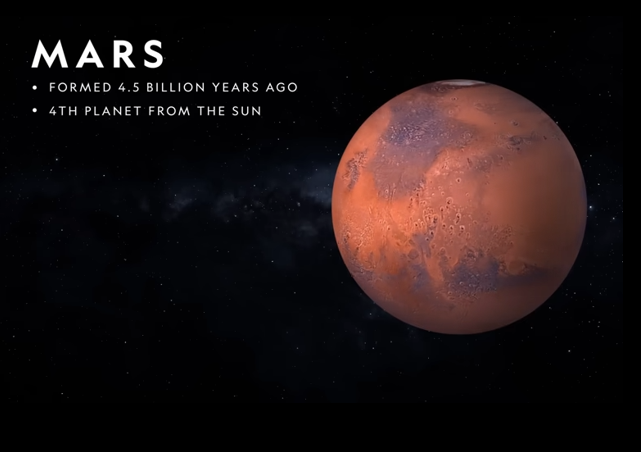Seismic Data Suggests Ocean’s Worth of Water Lies Beneath Surface of Mars

Scientists have discovered a significant reservoir of liquid water deep beneath the surface of Mars, marking a major breakthrough in our understanding of the Red Planet’s water cycle and potential for habitability
The discovery was made using data from NASA’s Mars InSight lander, which recorded seismic activity on Mars for four years before its mission concluded in December 2022. By analyzing the velocity of seismic waves from Marsquakes, researchers could infer the presence of liquid water in the planet’s rocky outer crust.
Three billion years ago, Mars was covered with oceans and flowing rivers of water. Today, the Red Planet’s landscape is starkly different, with no liquid surface water—just patches of frozen water ice—and rocky channels and dry lakebeds where rivers and lakes once were.But miles beneath its surface, Mars might contain a massive reservoir of water trapped within the nooks and crannies of porous, volcanic rock, according to a new study published Monday in the journal Proceedings of the National Academy of Sciences. If extracted, researchers say it would be enough water to create a planet-wide ocean about a mile deep.Data from NASA’s InSight lander, a robot designed to study the deep interior of Mars, revealed the underground ocean. Still, the water is not a single, giant reservoir; it’s instead encased within the miniature cracks of the planet’s crust, between about 7 and 13 miles deep. The findings could help researchers piece together what happened to all the water on Mars billions of years ago—and it might be the next place to look for signs of life.
Using data collected by the SEIS (Seismic Experiment for the Interior Structure) instrument, researchers Ikuo Katayama of Hiroshima University and Yuya Akamatsu of the Research Institute for Marine Geodynamics in Japan believe that the seismic waves show that the underground water is 6-12 miles deep beneath the barren surface.
SEIS was the first ever seismometer to operate on Mars, and it was sensitive to three different types of seismic wave emanating from marsquakes. These were: P-waves, which oscillate back and forth similar to how a sound wave propagates; S-waves which oscillate up and down, perpendicular to the direction of travel; and surface waves, which travel along the surface of Mars similar to ripples in a pond.The new research was focused on the subterranean P-waves and S-waves. P-waves are the faster seismic waves, while S-waves are slower and cannot travel through water because liquid does not permit that kind of oscillation perpendicular to motion. Seismometers measuring these two different types of seismic wave can help reveal the density and composition of the underground medium (such as water, or rock) through which those waves travelled, based on how strong their signals are and how long it took them to reach the seismometer.With that in mind, Katayama and Akamatsu honed in on two transitional regions in the seismic data, where there appear to be sudden changes in the properties of the interior of the Red Planet at depths of 6.2 to 12.4 miles (10 and 20 kilometers), very close to where previous studies claim to have found evidence for liquid water.
This finding is a good news/bad news for those hoping to colonize Mars.
The good news is that there is potentially available water on the planet, which can be mined and recycled for use. As with groundwater on Earth, Mars water resides in cracks and crevices.
The bad news is that there is a potential for microbial life in that water.
On Earth, these water-filled rocks can host microbes even while buried deep in the crust, said Michael Manga, study author and professor of planetary geology at the University of California at Berkeley. Since liquid water is one of the basic requirements for life as we know it, does that mean Mars could also host microbes underground?“That’s the bazillion-dollar question,” Manga added.
And such life would make the calculations and decisions related to exploring and colonizing Mars challenging.
CLICK HERE FOR FULL VERSION OF THIS STORY